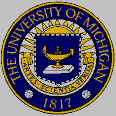
Tendon-Muscle Interfaces
Robert G. Dennis, Ph.D.

 |
Tendon-Muscle Interfaces Robert G. Dennis, Ph.D. |
 |
Objective: To engineer a robust interface between engineered muscle and it's anchor points (proximal and distal).
Rationale: 3-dimensional engineered muscle constructs tend to fail at their attachment points when subjected to prolonged tension or repeated maximal contractions. We hypothesize that this results from the accumulation of cellular damage at the attachment points resulting from stress concentrations arising from the abrupt change in mechanical impedance.
Background: Previous studies by Herman Vandenburgh et al. have demonstrated that the application of mechanical strain to passive muscle organoids resulted in the development of identifiable structures at the ends of each muscle fiber that correspond to specific structures in the myotendinous junction (MTJ) of control muscles. Under long-term static loading or repeated active loading, engineered muscle will tend to fail at the attachment points.
Technical Approach: Several
strategies will be employed in an attempt to generate a more robust myotendinous
junction in engineered muscle:
1- Application of graded electrical and
mechanical stimulation to engineered muscles in culture.
2- Creation of self-organizing tendon
like structures in vitro, to serve as fully biological engineered
tendons.
3- Use of controlled stiffness gradient
engineered scaffolds as attachment points.
Preliminary Data: We have
begun experiments in all three technical approaches, and have preliminary
data for each.
(1) Engineered muscle can tolerate chronic
electrical stimulation and active mechanical strain. The protocols
for this intervention have not been optimized or well explored.
(2) Paul Kosnik and I have developed initial
protocols that have yielded selforganizing tendon like structures in
vitro, composed entirely of fibroblasts and extracellular material,
containing long bundles of collagen fibrils parallel to the loading axis.
These self organized tendon like structures are the appropriate geometry
for use as tendons for our engineered muscle constructs.
(3) Dave Mooney and I have conducted experiments
using a UV activated polymerizing/cross linking agent and controlled exposure
to UV light to produce biocompatible polymers with a range of stiffness
ranging (qualitatively) from that of Jell-O to that of acrylic sheet.
By controlling the longitudinal exposure of a specimen to ultraviolet light,
a stiffness gradient in the polymerized material is readily achieved.
Impact: Impedance matching at the interface and an engineered stiffness gradient will reduce stress concentrations at the ends of the engineered muscle construct. The use of electromechanical interventions to promote the expression of structures specific to the myotendinous junction at the ends of each muscle construct will enhance the ability of adult phenotype engineered muscle to generate maximal tetanic force without injury, and to transmit that force to the adjoining structure to produce useful work.
Research Collaborators: Paul Kosnik, Herman Vandenburgh, Scott Hollister, David Mooney, Hugh Herr
To visualize the typical geometry at a typical insertion point between an engineered muscle and an attachment point, please view the video link below.
NOTE: (if
the movie opens in Netscape navigator)
To play the following
movie, just left click on the image after it loads.
To return, use
the BACK button on your browser.
To pause or move
frame-by-frame during viewing, right click on image.
Discussion of movie: The movie clip demonstrates that in many cases engineered tissues have mechanical interfaces that are not appropriate for the function of the tissue. In the case of muscle, the basic functional requirement is to transmit force, work, and power to the external environment. In order to do this, the mechanical connection between the muscle and the objects it exerts force upon must be engineered to reduce stress concentrations at the mechanical interfaces (origin and insertion of the muscle). Stress concentrations will occur at points of mechanical impedance mismatch, which happens when the muscle connects directly into an object much stiffer than itself. The difference in mechanical stiffness can arise from: (1) an abrupt change in material properties, i.e. elastic modulus, and (2) an abrupt change in geometry. This movie demonstrates both cases simultaneously: a very small diameter engineered muscle interfacing with a much larger diameter, stiffer segment of silk suture.
Bob's Home Page Current Research Muscle Mechanics Lab (U of M) Biomechatronics Group @ MIT